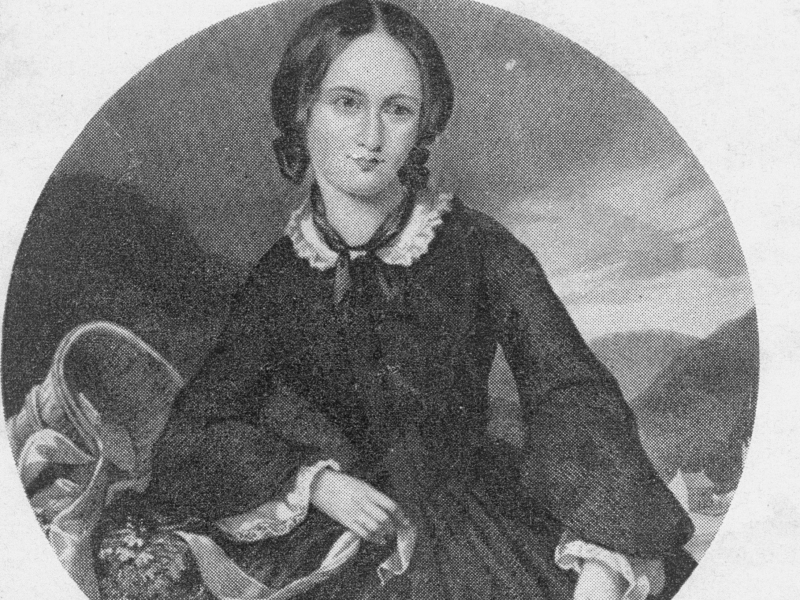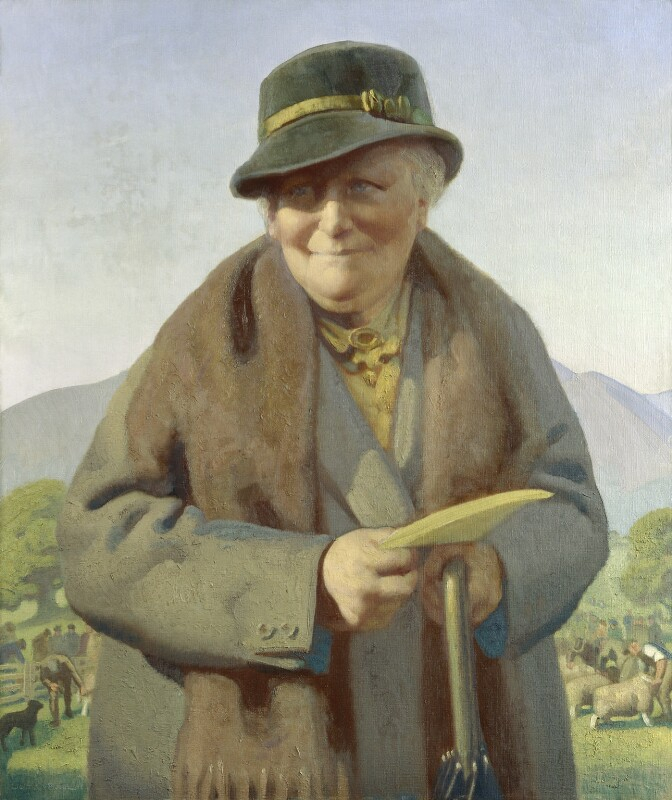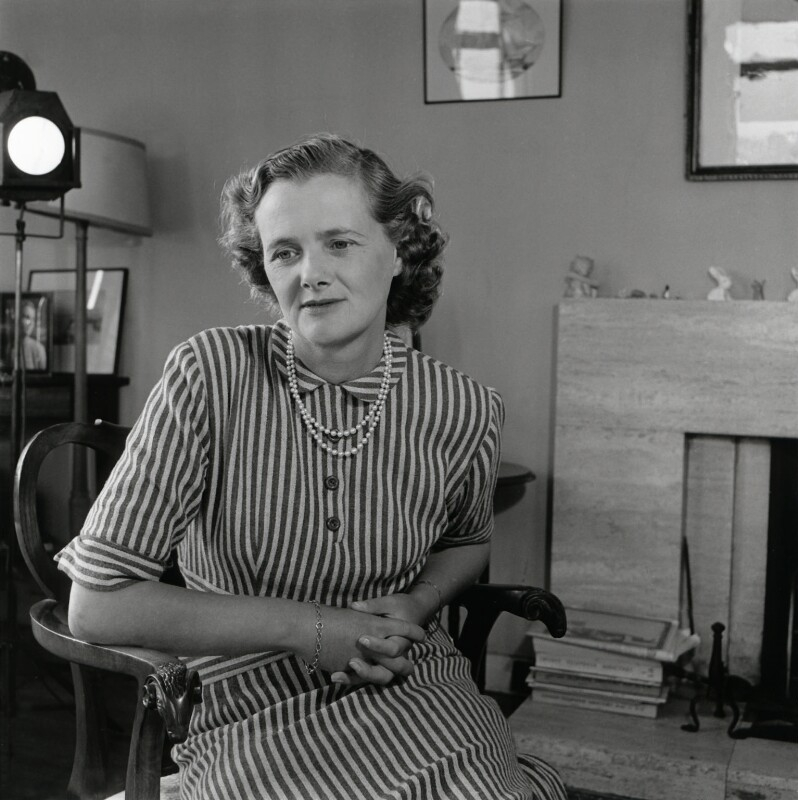Top 13 Best Female Novelists Ever
The best female writers are probably the most accomplished and talented women who have written some of the most well-known and significant works of literature. ... read more...Over the last few centuries, these women from all over the world have revolutionized the landscape of fiction writing. These women are not only the best female authors of all time, but also among the best writers ever. These women write in a variety of genres, including romance, science fiction, fantasy, adventure, and mystery, to mention a few. Countless others have been inspired by their work, which has resulted in various film adaptations. Can you guess who they are? Here, Toplist would like to introduce to you the top of the best female novelists ever.
-
Charlotte Brontë (April 21, 1816 – March 31, 1855) was an English novelist and poet. She was the eldest of the three Brontë sisters who lived to adulthood and whose works became English literary classics.
Charlotte Brontë left a vast legacy of written work, including classic works such as "Jane Eyre," "Shirley," and "Villette." She was the eldest of the three Bronte sisters—Charlotte, Emily, and Anne—all of whom were accomplished authors and poets. She was a strong and ambitious lady from an early age, refusing to follow the social conventions that were imposed on women at the time. She was a fiercely independent woman who presented a new kind of heroine to the literary world, one who resisted societal expectations to emerge as a brave and ethical individual in her own right.
Charlotte Brontë read Romantic authors including Sir Walter Scott, William Wordsworth, and Lord Byron as a child. The three Bronte sisters encouraged and supported one another in their undertakings, and they offered a constructive critique of one another's work. Charlotte, as the eldest of her surviving siblings, was responsible for caring for them financially, and she did so by working as a teacher and subsequently as a governess. Later, the sisters partnered and worked together to make money from their writings. The remarkable sisters' writing careers were cut short, however, by illnesses that claimed all three of them far too soon. With the treasure of works she left behind, she is always mentioned when it comes to the best female novelists ever.
Nationality: U.K

Photo: thefamouspeople 
Photo: laphamsquarterly -
Jane Austen (16 December 1775 – 18 July 1817) was an English novelist best known for her six major works, which interpret, critiqued, and commented on the British landed aristocracy around the turn of the nineteenth century. Austen's stories frequently address women's need for marriage in order to achieve social status and financial security. Her works are part of the shift to 19th-century literary realism and critique the novels of sensibility from the second half of the 18th century. Critics and academics have praised her use of stinging irony, as well as her realism and social critique.
She earned moderate success and little reputation in her lifetime with the publishing of Sense and Sensibility (1811), Pride and Prejudice (1813), Mansfield Park (1814), and Emma (1816), all of which were published anonymously. She also wrote two additional books, Northanger Abbey and Persuasion, both of which were published posthumously in 1818, and started a third, Sanditon, but died before it was finished. Three volumes of childhood writings in manuscript, the brief epistolary novel Lady Susan, and another unfinished novel, The Watsons, were also left behind.
Austen has spawned a slew of critical studies and anthologies. Her books have inspired numerous films, ranging from the 1940s Pride and Prejudice to more current works such as Sense and Sensibility (1995) and Love & Friendship (1999). (2016)
Nationality: U.K

Photo: zingnews 
Photo: doanhnhanplus -
Dame Agatha Mary Clarissa Christie, Lady Mallowan, DBE (née Miller; 15 September 1890 – 12 January 1976) was an English author best known for her 66 detective novels and 14 short story collections, many of which featured fictional detectives Hercule Poirot and Miss Marple. She also wrote six novels under the alias Mary Westmacott, including the world's longest-running play, The Mousetrap, which has been played in the West End since 1952. For her contributions to literature, she was named a Dame (DBE) in 1971. Christie is the best-selling fiction writer of all time, according to Guinness World Records, with more than two billion copies sold.
She is still the most-translated individual author, according to Index Translationum. With over 100 million copies sold, her novel And Then There Were None is one of the best-selling books of all time. The Mousetrap, Christie's stage drama, holds the world record for the longest first run. It premiered on November 25, 1952, at the Ambassadors Theatre in London's West End, and had over 27,500 performances by September 2018. Due to COVID-19 lockdowns, the play was closed in March 2020 and resumed in May 2021.
Christie received the Grand Master Award from the Mystery Writers of America for the first time in 1955. Witness for the Prosecution won an Edgar Award for best play later that year. In 2013, 600 professional novelists from the Crime Writers' Association voted her the finest mystery writer and The Murder of Roger Ackroyd the best crime novel ever. In a vote sponsored by the author's estate in September 2015, And Then There Were None was chosen as the "World's Favourite Christie." Christie's books and short tales have been adapted for television, radio, video games, and graphic novels in large numbers. Her work has been adapted into almost 30 feature films.
Nationality: U.K

Photo: fahasa 
Photo: type.vn -
Mary Wollstonecraft Shelley, née Mary Wollstonecraft Godwin, was an English Romantic novelist best known for writing Frankenstein. She was born on August 30, 1797, in London, England, and died on February 1, 1851, in London.
She met the young poet Percy Bysshe Shelley in 1812 and eloped with him to France in July 1814. She was the only daughter of William Godwin and Mary Wollstonecraft. After Shelley's first wife committed suicide, the two married in 1816. She returned to England after her husband's death in 1822 and dedicated herself to disseminating Shelley's writings and educating their only child, Percy Florence Shelley. She published her late husband's Posthumous Poems (1824) and edited his Poetical Writings (1839), which included extensive and useful remarks, as well as his prose works. Her Journal is a rich source of Shelley's biography, and her letters are an indispensable adjunct.Frankenstein or The Modern Prometheus (1818, revised 1831) is the best-known work of Mary Shelley, is a Gothic and philosophical novel that is also often regarded as an early form of science fiction. It depicts the horrifying consequences that follow a scientist's artificial creation of a human being. (The novel's man-made monster was based on a creature that appeared in a number of American horror films.) Valperga (1823), The Fortunes of Perkin Warbeck (1830), Lodore (1835), and Falkner (1837) are among her other books; The Last Man (1826), a portrayal of the human race's future extinction by a plague, is often regarded as her best work.
Nationality: U.K
Photo: thetimes 
Photo: momothepeach -
Adeline Virginia Woolf (25 January 1882 – 28 March 1941) was an English novelist and pioneer in the use of stream of consciousness as a literary element.
Woolf was born into an affluent South Kensington family, the seventh child of Julia Prinsep Jackson and Leslie Stephen in a blended family of eight that included Vanessa Bell, a modernist painter. From a young age, she was homeschooled in English classics and Victorian literature. She studied classics and history in the Ladies' Department of King's College London from 1897 to 1901, where she met early reformers of women's higher education and the women's rights movement.Woolf began writing professionally in 1900, thanks to her father's encouragement. Following her father's death in 1904, the Stephen family relocated from Kensington to Bloomsbury, where they created the artistic and literary Bloomsbury Group with the brothers' intellectual acquaintances. She married Leonard Woolf in 1912, and the two launched the Hogarth Press in 1917, which published a lot of her work. In 1940, they rented a house in Sussex and settled there permanently. Vita Sackville-West, who also published her novels through Hogarth Press, was one of Woolf's romantic partners. Their relationship, which lasted until Woolf's death, influenced both women's writing.
Woolf was a prominent figure in London's literary and artistic circles throughout the interwar years. Her debut novel, The Voyage Out, was released in 1915 by her half-publishing brother's business, Gerald Duckworth and Company. Mrs. Dalloway (1925), To the Lighthouse (1927), and Orlando are among her best-known pieces (1928). Her articles, such as A Room of One's Own, are also well-known (1929). Woolf became a prominent figure in the feminist critical movement of the 1970s, and her works have since gotten a lot of attention and criticism for "inspired feminism." More than 50 languages have been translated into her writings. Her life and work have been the topic of a significant corpus of literature, as well as plays, novels, and films. Today, statues, groups dedicated to her work, and a building at the University of London honor Woolf. These things can attest to her being one of the best female novelists ever.
Nationality: U.K

Photo: elle 
Photo: chuyendoc -
Emily Jane Brontë (30 July 1818 – 19 December 1848) was an English author and poet best known for Wuthering Heights, her only work, which is now considered a classic of English literature. She also co-wrote a book of poetry with her sisters Charlotte and Anne called Works by Currer, Ellis, and Acton Bell, in which she included her own poems and was hailed as a poet of brilliance. Between the youngest Anne and her brother Branwell, Emily was the second-youngest of the four surviving Brontë siblings. She wrote under the pseudonym Ellis Bell.
Emily Brontë's work on Wuthering Heights is impossible to date, and she may have spent a significant amount of time on this powerful, well-imagined story. It stands out from other novels of the time because of its dramatic and poetic presentation, lack of author commentary, and unconventional structure.
Emily differs from her sisters in that she makes no use of the events of her own life and shows no interest in a spinster's situation or a governess' role. She constructs an action, based on profound and primitive energies of love and hate, that proceeds logically and economically, requiring no rich romantic similes or rhetorical patterns, and confining the superb dialogue to what is immediately relevant to the subject, working, like them, within a confined scene and with a small group of characters. The book's solemn tone and the savagery of the characters offended certain 19th-century sensibilities. Its purported male nature was used to promote the idea that her brother Branwell was the author or co-author, based on the memories of his acquaintances long after his death. While it is not possible to clear up all the minor puzzles, neither the external nor the internal evidence offered is substantial enough to weigh against Charlotte’s plain statement that Emily was the author.Nationality: U.K

Photo: wikipedia 
Photo: singers -
Nelle Harper Lee (April 28, 1926 – February 19, 2016) was an American novelist best known for To Kill a Mockingbird, published in 1960. It earned the Pulitzer Prize in 1961 and has since become a modern American literary masterpiece. Lee has received various honorary degrees and awards, including the Presidential Medal of Freedom in 2007 for her contributions to writing. Truman Capote, a personal friend of hers, needed help with research for his book In Cold Blood, so she helped him (1966). To Kill a Mockingbird's character Dill Harris was based on Capote.
To Kill a Mockingbird's plot and characters are based on Lee's observations of her family and neighbors, as well as an incident that occurred near her hometown in 1936 when she was ten years old. As seen through the eyes of two children, the story explores the irrationality of adult attitudes regarding race and class in the Deep South of the 1930s. It was inspired by racial views in Monroeville, Alabama, where she grew up. Go Set a Watchman, published in July 2015 as a sequel to Mockingbird but later proved to be an earlier manuscript of Mockingbird, was written in the mid-1950s.
Nationality: U.S

Photo: vietnamplus 
Photo: tienphong -
Louisa May Alcott (November 29, 1832 – March 6, 1888) was an American novelist, short story writer, and poet best known for her novels Little Women (1868) and Little Men (1871) and Jo's Boys (1888). (1886). Abigail May and Amos Bronson Alcott, both transcendentalists, raised her in New England, where she grew up among many well-known intellectuals of the day, including Ralph Waldo Emerson, Nathaniel Hawthorne, Henry David Thoreau, and Henry Wadsworth Longfellow.
Alcott's family struggled financially, and she began working at a young age to help support them while simultaneously seeking an outlet in writing. In the 1860s, she began to receive critical acclaim for her work. Early in her career, Alcott utilized various pen identities, including A. M. Barnard, under which she published gruesome short tales and adult sensation novels about passion and revenge.
Throughout her life, Alcott was an abolitionist and a feminist who was active in reform organizations such as temperance and women's suffrage. Alcott did not marry. On March 6, 1888, she died of a stroke, two days after her father in Boston.Nationality: U.S

Photo: biography 
Photo: kyluc -
Mary Ann Evans (November 22, 1819 – December 22, 1880), better known by her pen name George Eliot, was an English novelist, poet, journalist, translator, and one of the most influential Victorian writers. Adam Bede (1859), The Mill on the Floss (1860), Silas Marner (1861), Romola (1862–63), Felix Holt, the Radical (1866), Middlemarch (1871–72), and Daniel Deronda (1871–72) are among her seven works (1876). She, like Charles Dickens and Thomas Hardy, grew up in rural England, and most of her works are set there. Her paintings are noted for their realism, psychological insight, sense of place, and precise depictions of rural life.
Despite the fact that female authors were published under their own names during her lifetime, George Eliot sought to break the stigma that women's writing was limited to fluffy romances and less serious fare. She also wanted her writing to be appraised independently of her already well-known work as a translator, editor, and critic. Another reason for her pen name could have been a wish to keep her personal life out of the spotlight, avoiding the controversy that would have resulted from her relationship with married George Henry Lewes.
Middlemarch was called "one of the few English novels written for grown-up people" by Virginia Woolf, and "the best work in the English language" by Martin Amis and Julian Barnes.
Nationality: U.K
Photo: dean2020 
Photo: history -
Margaret Eleanor Atwood is a Canadian poet, novelist, literary critic, essayist, teacher, environmental activist, and inventor who was born on November 18, 1939. She has published 18 collections of poetry, 18 novels, 11 works of nonfiction, nine collections of short fiction, eight children's books, and two graphic novels since 1961, as well as a number of small press editions of poetry and fiction. Two Booker Prizes, the Arthur C. Clarke Award, the Governor General's Award, the Franz Kafka Prize, Princess of Asturias Awards, and the National Book Critics and PEN Center USA Lifetime Achievement Awards are among Atwood's many accolades. Her novels have been adapted for film and television in a multitude of ways.
Gender and identity, religion and myth, the power of language, climate change, and "power politics" are all themes in Atwood's writing. Many of her poems are inspired by mythology and fairy stories, which she has been fascinated with since she was a child.
The Griffin Poetry Prize and the Writers' Trust of Canada were founded by Atwood. Margaret Eleanor Atwood is also a Senior Fellow at Toronto's Massey College. She is the creator of the LongPen gadget and related technologies that allow for remote robotic document writing.
Nationality: Canada
Photo: dtv-ebook 
Photo: thetimes -
Helen Beatrix Potter was an English writer, illustrator, natural scientist, and conservationist who lived from July 28, 1866, until December 22, 1943. She is most known for her animal-themed children's novels, such as The Tale of Peter Rabbit.
Potter, who was born into an upper-middle-class family and was schooled by governesses, grew up alone. She had several pets and vacationed in Scotland and the Lake District, where she developed a passion for scenery, flora, and fauna, which she meticulously observed and painted. Potter is well-known in the world of mycology for her studies and watercolors of fungi. Potter self-published the extremely acclaimed children's novel The Tale of Peter Rabbit in her forties. Potter then went full-time writing and illustrating children's books.Potter published thirty books, the most famous of which are her twenty-three children's stories. Potter purchased Hill Top Farm in Near Sawrey in 1905 with the earnings from the books and a bequest from an aunt. Near Sawrey is a settlement in the Lake District in the ancient county of Lancashire. She bought more farms in the following decades to maintain the unique hill country beauty. She married William Heelis, a respected local solicitor from Hawkshead, in 1913 at the age of 47. Potter was also a prize-winning Herdwick sheep breeder and a successful farmer who was passionate about land preservation. She continued to write and illustrate, and design spin-off merchandise based on her children's books for British publisher Warne until the duties of land management and her diminishing eyesight made it difficult to continue. With the large number of works that she left behind as well as her dedication, she really deserves to be on the list of the best female novelists ever.
Nationality: U.K

Photo: britishheritage 
Photo: npg.org.uk -
Dame Daphne du Maurier, Lady Browning, DBE was an English author, biographer, and playwright who lived from 13 May 1907 until 19 April 1989. Du Maurier lived in Cornwall for most of her life, and most of her novels are set there. She became increasingly reclusive as her celebrity grew.
Her stories have been described as "moody and resonant" with otherworldly implications, despite the fact that she is classified as a romantic novelist. Her best-selling books were initially dismissed by critics, but they have now established an enduring reputation for narrative excellence. The novels Rebecca, Frenchman's Creek, My Cousin Rachel, and Jamaica Inn, as well as the short tales "The Birds" and "Don't Look Now," have all been effectively turned into films.
Nationality: U.K

Photo: nytimes 
Photo: npg.org.uk -
Ursula Kroeber Le Guin (October 21, 1929 – January 22, 2018) was an American speculative fiction author best known for her Earthsea fantasy series and science-fiction novels based in her Hainish universe. She was first published in 1959 and had a nearly sixty-year literary career, writing over twenty novels and over a hundred short stories, as well as poetry, literary criticism, translations, and children's books. Le Guin has been said to as an "important voice in American Letters" as well as a science-fiction novelist. Le Guin herself has stated that she prefers to be referred to as an "American novelist."
Le Guin's work was heavily influenced by cultural anthropology, Taoism, feminism, and Carl Jung's teachings. Many of her stories featured anthropologists or cultural watchers as protagonists, and her writings have been linked to Taoist concepts of balance and harmony. In books like Always Coming Home, Le Guin used unconventional stylistic or structural tactics to disrupt traditional speculative fiction stereotypes, such as the employment of dark-skinned characters (1985). Her stories often dealt with social and political issues like as race, gender, sexuality, and coming of age, and she explored alternative political structures in several of them, such as the fable "The Ones Who Walk Away from Omelas" (1973) and the anarchist utopian novel The Dispossessed (1974).
Le Guin's work had a huge impact on the field of speculative fiction and has gotten a lot of attention from critics. She won a slew of awards, including eight Hugos, six Nebulas, and twenty-two Locus Awards, and was named a Grand Master of the Science Fiction and Fantasy Writers of America in 2003. She was recognized as a Living Legend by the United States Library of Congress in 2000, and she received the National Book Foundation Medal for Distinguished Contribution to American Letters in 2014. Many other authors, including Booker Prize winner Salman Rushdie, David Mitchell, Neil Gaiman, and Iain Banks, were influenced by Le Guin. After her death in 2018, critic John Clute wrote that Le Guin had "presided over American science fiction for nearly half a century", while author Michael Chabon referred to her as the "greatest American writer of her generation".
Nationality: U.S
Photo: wikipedia 
Photo: broadway


































